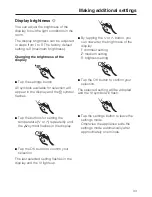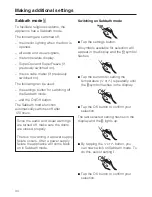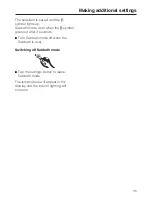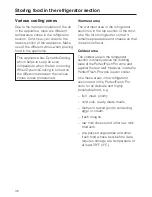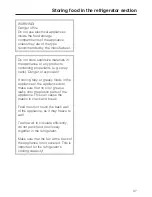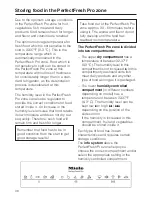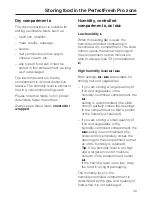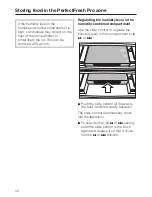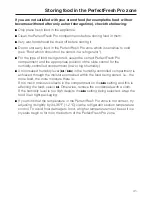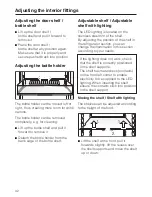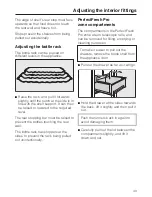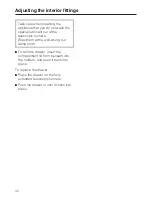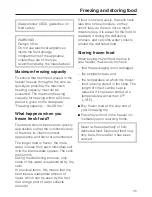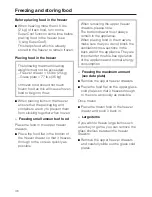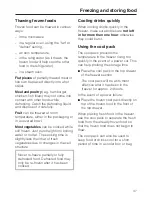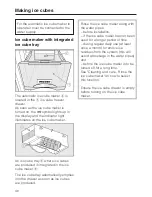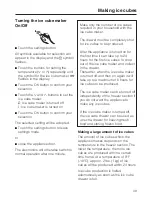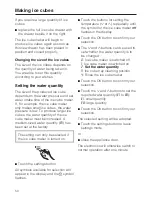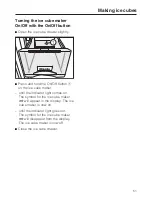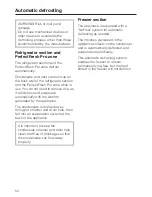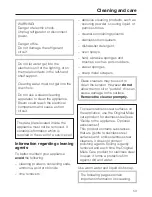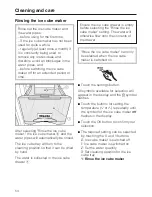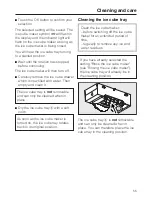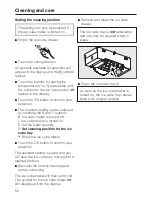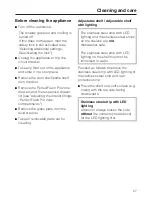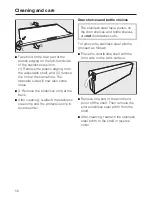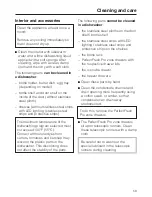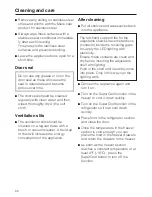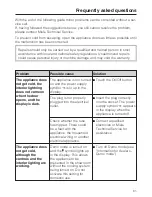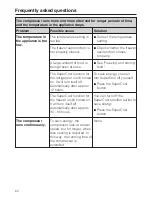
Thawing frozen foods
Frozen food can be thawed in various
ways:
– in the microwave,
– in a regular oven, using the "fan" or
"defrost" setting,
– at room temperature,
– in the refrigerator (as it thaws, the
frozen food will help cool the other
food in the refrigerator),
– in a steam oven.
Flat pieces
of partially thawed meat or
fish can be placed directly into a hot
skillet.
Meat and poultry
(e.g. hamburger,
chicken, fish fillets) may not come into
contact with other foods while
defrosting. Catch the defrosting liquid
and dispose of it carefully.
Fruit
can be thawed at room
temperature, either in the packaging or
in a covered bowl.
Most vegetables
can be cooked while
still frozen. Just put straight into boiling
water or hot fat. The cooking time is
slightly less than that of fresh
vegetables due to changes in the cell
structure.
Never re-freeze partially or fully
defrosted food. Defrosted food may
only be re-frozen after it has been
cooked.
Cooling drinks quickly
When cooling drinks quickly in the
freezer, make sure bottles are
not left
in for more than one hour
; otherwise
they could burst.
Using the cool pack
The cool pack prevents the
temperature in the freezer rising too
quickly in the event of a power cut. This
can help prolong the storage time.
^
Place the cool pack in the top drawer
of the freezer section.
The cool pack will be at its most
effective after it has been in the
freezer for approx. 24 hours.
In the event of a power failure:
^
Place the frozen cool pack directly on
top of the frozen food in the front of
the top drawer.
When placing fresh food in the freezer,
use the cool pack to separate the fresh
food from the already frozen food so
that the frozen food does not begin to
thaw.
The cool pack can also be used to
keep food or drinks cool for a short
period of time in a cooler box or bag.
Freezing and storing food
47

